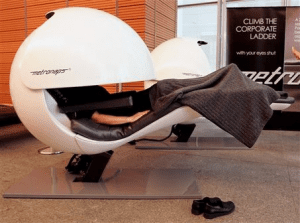Published on April 27, 2018

Reams and reams have been written to find out ways and means to make the employee creative. Being creative, innovative, thinking out of the box…., etc…, adjectives can change, but the essence is to ensure continuous progress and remaining or becoming competitive. Ahead of the race, so as to say.
But why creativity ? How does it help ?
Businesses have become increasingly global and complex. Constantly evolving challenges, like a continuously moving goalpost, require unconventional thinking and innovative solutions to compete. This changing scenario is inevitable and creative people are better equipped to adapt and use it to their advantage.
Experts say, when we stare at a problem using a single lens, it’s difficult to be productive. We get sucked up by old ways of thinking. To develop a new way, we need to break from routine.
Steve Jobs, had this to say about Creativity while being interviewed by Wired magazine:
“Creativity is just connecting things. When you ask creative people, how they did something, they feel a little guilty, because they didn’t really do it, they just saw something. It seemed obvious to them for a while. That’s because they were able to connect experiences they have had and synthesize new things. And the reason they were able to do that was they have had more experiences or they have thought more experiences than other people.
The crux is – the more ideas we are exposed to, the more likely we are to find novel solutions. Excess is, well not always bad.
Todd Henry, the author of The Accidental Creative, points out – “If you want to regularly generate brilliant ideas, you must be careful of what goes into your head”.
The biggest challenge faced by majority of the organisations is their employees are exposed to same information day after day. In order to overcome this, an increasing number of companies are trying to break that mould – inspired by the success of Google, Facebook and many more new-age companies.
Fair enough, but what would an organisation actually do to foster creativity?
Google for example asked its employees to set 20% of their working time (one day in a week) on side projects. Popularly known as Google’s 20 Percent Factor, these side projects are actually self-authored but work related projects. The employees are free to decide. It’s their time, they can play pool, jog, sleep…..
This approach helped Google create more jobs. It’s an approach that helped its employees feel more autonomous and encourages them to keep an eye on new opportunities.
Results…. phenomenal by any standards…. Gmail, Google News, Google Earth & AdSense. All these products were created by Googlers in their 20 percent time. For starters, AdSense alone adds an astonishing $10 Billion* each year to Google’s overall kitty.
*Source – The Best Place to Work by Ron Friedman
It’s difficult to imagine, if Google would be as successful and as innovative as it is, if their employees were waiting for instructions from Larry Page and Sergey Brin.
- Note: Owing to some issues, this 20% time program has been cancelled (many terming the cancellation, a mistake)– but I would say it has more than paid its dues for generations to come.
3 M and HP are two more names that come to mind for having similar practices in their organisations.
Power napping is another – according to research by University of California, San Diego School of Medicine, Rapid Eye Movement (REM) sleep enhances creative problem solving. Sara Mednick, PhD, who was one of the researchers says, “We found that – for creative problems that you’ve already been working on, the passage of time is enough to find a solution. However, for new problems, only REM sleeps-enhances-creativity”.
Not surprising, many companies have already started encouraging employees to take a nap in the afternoon.
In any case, as per a study conducted by Swan Medical, over 50% of employees in US experience poor or insufficient sleep and these sleep disorders cost a whopping $63.2 Billion per year.
 Huffington Post, Aetna, AOL, P&G, Cisco and of-course Google have invested heavily and installed Energy Pods (shown in pic) in their offices.
Huffington Post, Aetna, AOL, P&G, Cisco and of-course Google have invested heavily and installed Energy Pods (shown in pic) in their offices.
These energy pods are costing $8000 each and offer an excellent ambiance, soothing music that lulls you to sleep slowly. After stipulated time of 20 minutes or so, the timer wakes you up with a gentle vibration.
Apart from these companies, Yahoo, Zappos, Ben & Jerry and Time Warner have either outsourced their napping to local spas or have dedicated quiet rooms in their premises.
If space was a constraint, New York based Workman Publishing have distributed yoga mats and eye masks to employees who can take a nap virtually anywhere, even underneath their desks.
Sounds too futuristic!!! Not really, if you need to take a rest after regular gymnasium or any sports where your physical muscles are put to test – why not when your mental muscles are at test. Declining performance may not be as evident as in the gym but there are enough proofs to prove our hypothesis wrong.
Forced Leave, well literally… I recall in one of the companies that I worked, there used to be a saying that if someone is not taking leave – there ought to be something wrong, either in his personal life or some big issue professionally. May be the employee has too many skeletons in the cupboard or he/she is too insecure – lest his junior who would supposedly handle his/her day-to-day work in absence finds out or he turns out to be way too smarter than the employee.
Long story short – the employees need vacations not only to rejuvenate but also to check on some other points as mentioned above.
Boston Consulting Group has started monitoring employees paid time off (PTO) to ensure the employees do not accumulate too many hours without taking a break.

Many others encourage employees to take time off with their near and dear ones and come back refreshed. However, piece of cake goes to FullContact, a Denver software company, that actually pays an employee extra (not LTA) to take time off with their families. Though there is a serious condition to claim the bonus of $7500 per employee – One has to take vacation, No work during vacation and Complete disconnection.
Talking of disconnection – it is completely acceptable to expect a response to an email after office hours or on weekends, especially if you are working in an Indian company, even many of the MNCs. In order to ensure their employee’s stay completely disconnected so that when they resume their job next day, they are more productive, many companies are doing innovative things.
Sounds unrealistic – it did to me before I did some research while writing this piece. According to a 2010 study published in the Journal of Applied Psychology, the less an employee detach psychologically during off-hours, the higher their emotional exhaustion.
Staying connected is actually quite addictive. It helps us feel needed, knowing everything. I recall a saying one of our seniors used to say that in case your boss doesn’t bother you while you are holidaying – there is a clear indication that your value is declining/declined. Well how untrue in the current context where more and more of new generations believe in the adage – Work hard and party harder.
Volkswagen has started turning off their email server 30 minutes after shift is over and turning it on just before the start of the next shift.
So is Daimler, the auto giant that deletes all the emails received by employees on vacation and the sender receives a message to contact an alternative person. Initially it was optional for 100,000 workers but almost 99% people have opted for this and seems to be enjoying. An article that appeared in The New York Times Giving Email a Holiday clearly describes the positive impact this has created.
To conclude, let me cite an example of Jim Loehr, a sports psychologist who has coached some of the worlds top athletes. He spent countless time observing world’s best tennis players to understand what makes them better than their opponents. And he found something extremely surprising but profound.
What makes an elite tennis player is NOT what he does ON the court while playing but what he does in between the points. Some athletes are better to calm their nerves and restoring their focus and they are the ones who tend to win the most.
The same is true for work place as well. A correct balance between work and play is the need and its never too late to start.
Amen….

